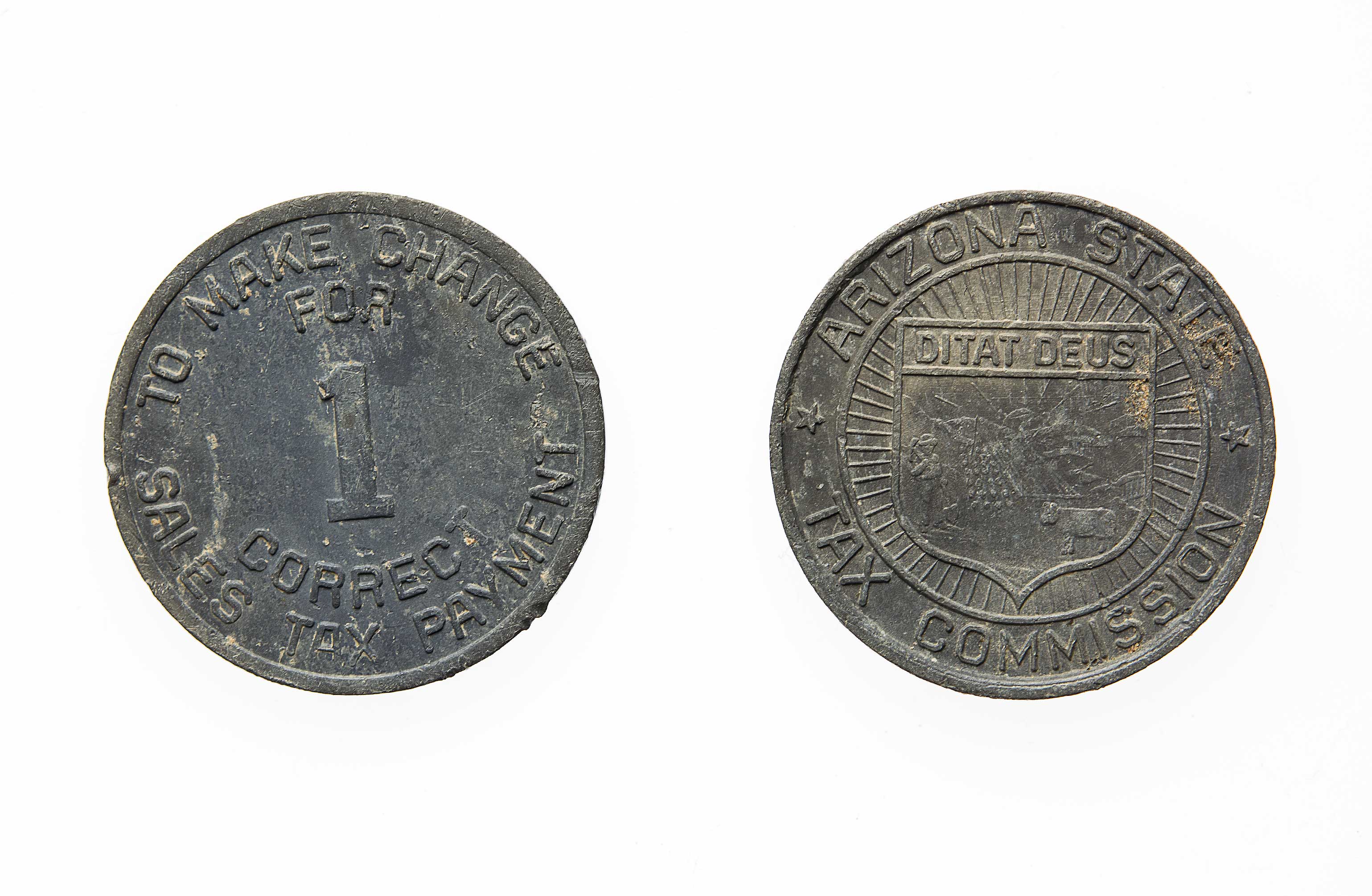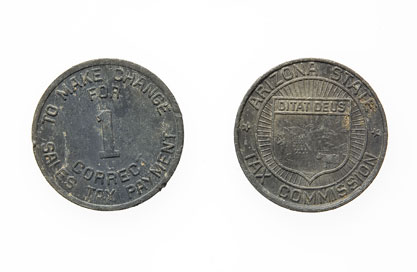Arizona Tax Coin
Unidentified metals
Circa 1930s
D 2/3’’
Lake Mead National Recreation Area, LAKE 17971
See more
Hide this content
In the 1930s, many states began to charge a sales tax. However, the tax often led to the total cost coming down to fractions of a cent. For example, an item costing $1.50 with a sales tax of 3% would result in a total of $1.545. In order to prevent either the retailer or the customer from profiting by rounding up or down, tax coins were introduced. By using a tax coin, a customer would pay $1.54 plus 5 sales tax coins or pay $1.55 and receive 5 sales tax coins as change. The practice of using sales tax coins died out in the 1950’s.
References:
Arizona Republic
http://www.azcentral.com/arizonarepublic/arizonaliving/articles/2008/10/24/20081024azhist1024.html



Arizona Tax Coin
Unidentified metals
Circa 1930s
D 2/3’’
Lake Mead National Recreation Area, LAKE 17971
See more
Hide this content
In the 1930s, many states began to charge a sales tax. However, the tax often led to the total cost coming down to fractions of a cent. For example, an item costing $1.50 with a sales tax of 3% would result in a total of $1.545. In order to prevent either the retailer or the customer from profiting by rounding up or down, tax coins were introduced. By using a tax coin, a customer would pay $1.54 plus 5 sales tax coins or pay $1.55 and receive 5 sales tax coins as change. The practice of using sales tax coins died out in the 1950’s.
References:
Arizona Republic
http://www.azcentral.com/arizonarepublic/arizonaliving/articles/2008/10/24/20081024azhist1024.html







